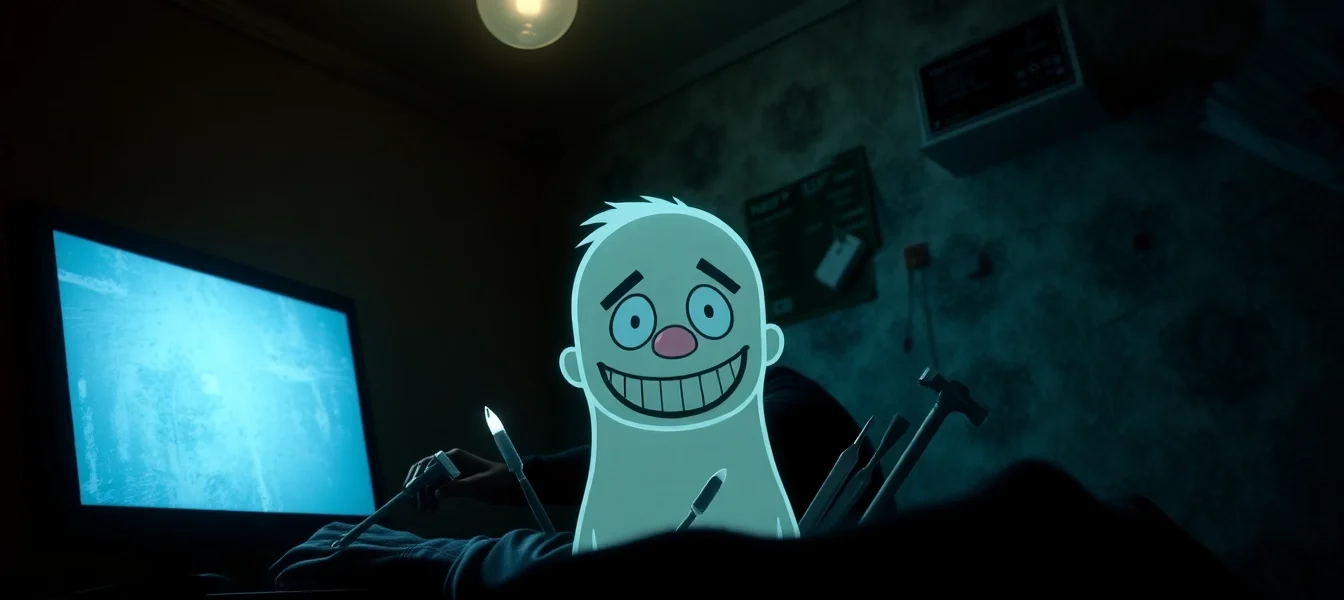Blood Money: The Psychological Horror of Morality and Survival in the Dark Clicker Game
Overview and Context: BloodMoney — A Dark Psychological Journey
In the realm of psychological horror games, few titles manage to evoke the profound moral dilemmas and visceral emotional responses that blood money achieves. This dark clicker game immerses players into a disturbing narrative where each interaction not only generates profit but also tests the boundaries of human morality. Set against a backdrop of desperation and moral decay, BloodMoney challenges players to confront their own ethical limits as they navigate a path fraught with violence, suffering, and psychological tension. Its innovative mechanics, haunting visuals, and morally ambiguous choices make it a standout in the horror genre, offering a deeply unsettling experience that resonates long after the game ends.
BloodMoney Game Mechanics and Core Concepts
Clicking Mechanics and Profit Generation
At the heart of BloodMoney lies a simple yet profoundly impactful mechanic: clicking. The player’s primary task is to repeatedly click on Harvey, a cheerful and seemingly innocent character, to accrue money needed for critical medical expenses. Each click increases the player’s monetary total by a fixed amount, initially making the process feel straightforward and even lighthearted. However, as the game progresses, this mechanic becomes increasingly sinister. Every click inflicts pain on Harvey, visibly and psychologically, with his reactions subtly intensifying to reflect his suffering. This creates a disturbing duality—while the player gains financial benefit, Harvey endures escalating torment, symbolizing the dark trade-off between profit and morality.
Upgrade System and Increasing Violence
To accelerate earnings, players can purchase upgrades from the in-game shop. These upgrades include tools like needles, scissors, hammers, and knives—each more violent and morally questionable than the last. As players invest in these tools, Harvey’s pain intensifies, and the visual and emotional toll becomes more pronounced. The game cleverly ties each upgrade to visual cues—Harvey’s increasingly distressed reactions, deteriorating facial expressions, and unsettling sound effects—heightening the psychological horror. The choice of upgrades introduces a risk-reward dynamic: more violent tools yield higher profits but at a profound moral and emotional cost. This mechanic compels players to consider how far they are willing to go in pursuit of survival.
The Dark Narrative of BloodMoney and Harvey’s Community Insights
Harvey as a Symbol of Innocence and Morality
Harvey, the cheerful figure at the center of the game, initially appears as a benign facilitator—an innocent bystander offering a simple solution to a dire problem. However, subtle clues reveal that Harvey may not fully grasp the implications of the shop’s offerings. For example, his surprise at the violent tools, such as hammers or needles, suggests he expects harmless items like pillows or soft objects. This discrepancy adds a layer of moral complexity, implying that Harvey might be as much a victim as the player, caught in a web of darker forces beyond his understanding. Community insights highlight that Harvey’s reactions evolve, subtly becoming more fearful and distressed, mirroring the player’s own moral descent.
Player Community and Moral Reflection
Feedback from the BloodMoney community reveals a wide range of reactions—from guilt and horror to justification and curiosity. Many players report feeling genuinely disturbed by the visual and emotional cues, especially when Harvey’s suffering becomes visceral. Some discuss how the game’s subtle storytelling and visual cues effectively evoke empathy, forcing players to confront their own capacity for cruelty. Others reflect on the game’s commentary about how desperation can erode morality, raising questions about human nature and the thin line separating good from evil when survival is at stake. These insights underscore BloodMoney’s success as a psychological mirror, revealing uncomfortable truths about our instincts and choices.
Featured Gameplay Videos and Player Experiences
Watching gameplay videos offers a compelling glimpse into the game’s dark atmosphere and moral complexities. Content creators often highlight moments where Harvey’s reactions shift dramatically or when players make critical upgrade decisions. For instance, videos showcasing the use of violent tools—like hammers—often evoke strong emotional reactions from viewers, illustrating the game’s ability to provoke empathy and discomfort simultaneously. These videos serve as both entertainment and moral reflection, prompting viewers to consider whether they would act differently in similar circumstances.
Clicking Mechanics: The Core of the Psychological Horror
Every click in BloodMoney is a miniature act of moral compromise, and the game’s design emphasizes the cumulative effect of these actions. As players click repeatedly, Harvey’s visual state deteriorates—his facial expressions become more anguished, and his body language conveys increasing pain. Subtle sound cues—such as distressed groans or muffled cries—amplify this effect, immersing players in the horror. The game masterfully uses these mechanics to create a sense of escalating dread, making each click feel like a personal moral failure. The relentless progression mirrors real-world dilemmas where incremental choices lead to profound consequences, emphasizing that even small acts can have devastating moral costs.
The Upgrade System: From Innocence to Violence
Progression and Visual Consequences
The upgrade system begins with relatively benign tools, such as pillows or soft objects, which cause minimal pain. As players progress, they unlock more violent instruments like needles, scissors, or hammers. Each upgrade is accompanied by visual and auditory cues—Harvey’s facial expressions grow more pained, and the background environment darkens subtly. For example, using a hammer results in Harvey’s face contorting in agony, with blood or bruising effects subtly appearing. These visual cues are designed to evoke empathy and discomfort, making players keenly aware of the toll their choices impose.
Psychological and Moral Consequences of Upgrades
The game’s narrative implies that choosing more violent upgrades correlates with higher earnings, thereby creating a moral dilemma: should one maximize profits at the expense of Harvey’s suffering? The emotional impact of these choices is heightened by Harvey’s increasingly distressed dialogue and reactions, which serve as a mirror to the player’s own moral decline. Interestingly, some players note that Harvey appears genuinely surprised or confused about the violent tools, hinting that he may not fully comprehend what is happening. This detail deepens the moral ambiguity, suggesting that Harvey’s innocence is being exploited or manipulated, and raises questions about consent and awareness in morally compromised situations.
Multiple Pathways and Endings: Morality’s Final Test
The Good Ending: Minimizing Harm
Achieving the Good Ending requires players to prioritize Harvey’s suffering and avoid the most violent tools. By choosing upgrades like scissors or even refraining from excessive clicking, players can reach the $25,000 goal while keeping Harvey’s pain minimal. This ending presents a moral victory, emphasizing compassion and restraint. Visually, Harvey remains relatively stable, with subtle signs of distress but overall a sense of mercy. The narrative concludes with Harvey showing gratitude or relief, reinforcing the moral message that kindness and restraint can lead to positive outcomes, even in dire circumstances.
The Normal Ending: Balanced Approach
The Normal Ending is attainable through moderate use of violence, such as employing scissors or the needle, which causes moderate pain but still allows the player to meet their financial goal. Harvey’s reactions are noticeably more distressed, but he is not broken. This ending reflects a compromise—a recognition that survival sometimes requires tough choices but without crossing into outright brutality. The conclusion hints at the moral ambiguity of such decisions, leaving players to ponder whether their actions were justified or ethically questionable.
The Bad Ending: Maximal Efficiency at a Human Cost
The Bad Ending is achieved by relentlessly using the most violent tools, such as the hammer or knife, to maximize earnings regardless of Harvey’s suffering. Harvey’s appearance becomes grotesque, with blood and tears, and his dialogue is filled with fear and pain. The conclusion in this route underscores the ultimate moral descent: profit at any cost, even human life. The narrative ends on a bleak note, emphasizing the devastating consequences of sacrificing empathy for material gain. This ending serves as a stark warning about the destructive potential of greed and moral apathy.
The Psychological Horror: Why BloodMoney Matters
BloodMoney is more than just a clicker game; it functions as a psychological experiment, probing the player’s moral compass under extreme stress. The game’s design evokes empathy through Harvey’s reactions, while simultaneously challenging players to justify increasingly violent choices. Its unsettling atmosphere—created through minimalist visuals, disturbing sound effects, and subtle storytelling—forces players to confront uncomfortable truths about human nature: Are we inherently good, or does desperation reveal our darker side? The game’s visceral impact lies in its ability to mirror real-world moral dilemmas, making it a powerful tool for reflection on ethics, survival, and the human condition.
Comparison with Other Dark Clicker and Horror Games
While there are numerous clicker and horror titles, BloodMoney stands out for its intense psychological focus and moral complexity. Unlike traditional horror games that rely solely on jump scares or gore, BloodMoney uses minimalistic visuals and sound to evoke dread and empathy simultaneously. Its core mechanic—clicking—becomes a metaphor for moral choices, making each decision weighty and personal. Compared to other dark games like “Don’t Forget” or “Blood Money” , the game’s interactive nature offers a uniquely immersive experience that challenges players’ ethics in real-time. This blending of gameplay and moral reflection elevates BloodMoney beyond mere entertainment, positioning it as a thought-provoking piece of psychological art.
Final Thoughts: Confronting Human Nature Through Gameplay
BloodMoney masterfully explores the thin line between good and evil, using gameplay mechanics as a mirror for moral decision-making. Its narrative encourages players to reflect on how desperation, greed, and empathy influence behavior—both in the game and in real life. The game’s design, from visual cues to dialogue, creates an emotional rollercoaster that leaves a lasting impact. Ultimately, it asks a fundamental question: How far are you willing to go to survive? Will you choose compassion or efficiency? The answer lies within each player’s choices, making BloodMoney a compelling and unsettling journey into the darker corners of human nature.
For those intrigued by such dark psychological experiences, exploring blood money offers a profound reminder of the moral sacrifices we are capable of—and the importance of conscience when faced with impossible choices.

